Effects of long-acting muscarinic antagonists on promoting ciliary function in airway epithelium
- PMID: 35527239
- PMCID: PMC9080152
- DOI: 10.1186/s12890-022-01983-3
Effects of long-acting muscarinic antagonists on promoting ciliary function in airway epithelium
Abstract
Background: Mucociliary clearance (MCC) is an essential defense mechanism in airway epithelia for removing pathogens from the respiratory tract. Impaired ciliary functions and MCC have been demonstrated in asthma and chronic obstructive pulmonary disease (COPD). Long-acting muscarinic antagonists (LAMAs) are a major class of inhaled bronchodilators, which are used for treating asthma and COPD; however, the effects of LAMAs on ciliary function remain unclear. This study aimed to identify the effects of LAMAs on airway ciliary functions.
Methods: Wild-type BALB/c mice were treated with daily intranasal administrations of glycopyrronium for 7 days, and tracheal samples were collected. Cilia-driven flow and ciliary activity, including ciliary beat frequency (CBF), ciliary beating amplitude, effective stroke velocity, recovery stroke velocity and the ratio of effective stroke velocity to recovery stroke velocity, were analyzed by imaging techniques. Using in vitro murine models, tracheal tissues were transiently cultured in media with/without LAMAs, glycopyrronium or tiotropium, for 60 min. Cilia-driven flow and ciliary activity were then analyzed. Well-differentiated normal human bronchial epithelial (NHBE) cells were treated with glycopyrronium, tiotropium, or vehicle for 60 min, and CBF was evaluated. Several mechanistic analyses were performed.
Results: Intranasal glycopyrronium administration for 7 days significantly increased cilia-driven flow and ciliary activity in murine airway epithelium. In the murine tracheal organ culture models, treatment with glycopyrronium or tiotropium for 60 min significantly increased cilia-driven flow and ciliary activity in airway epithelium. Further, we confirmed that 60-min treatment with glycopyrronium or tiotropium directly increased CBF in well-differentiated NHBE cells. In the mechanistic analyses, neither treatment with glycopyrronium nor tiotropium affected intracellular calcium ion concentrations in well-differentiated NHBE cells. Glycopyrronium did not increase protein kinase A activity in well-differentiated NHBE cells. Moreover, glycopyrronium had no effect on extracellular adenosine triphosphate concentration.
Conclusions: LAMAs exert a direct effect on airway epithelium to enhance ciliary function, which may improve impaired MCC in asthma and COPD. Further investigations are warranted to elucidate the underlying mechanisms of the effects of LAMAs on the promotion of airway ciliary function.
Keywords: Airway epithelium; Asthma; COPD; Ciliary beat frequency; Long-acting muscarinic antagonists; Mucociliary clearance.
© 2022. The Author(s).
Conflict of interest statement
The authors declare that they have no competing interest.
Figures
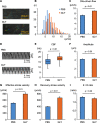
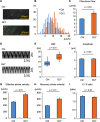
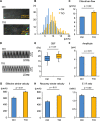
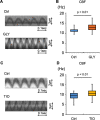
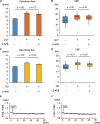

Similar articles
-
Influenza A virus enhances ciliary activity and mucociliary clearance via TLR3 in airway epithelium.Respir Res. 2020 Oct 27;21(1):282. doi: 10.1186/s12931-020-01555-1. Respir Res. 2020. PMID: 33109186 Free PMC article.
-
Once-daily glycopyrronium bromide (Seebri Breezhaler(®)) for the treatment of chronic obstructive pulmonary disease (COPD).Expert Opin Pharmacother. 2015;16(17):2653-9. doi: 10.1517/14656566.2015.1100171. Epub 2015 Dec 5. Expert Opin Pharmacother. 2015. PMID: 26641535 Review.
-
Muscarinic Receptor Antagonists.Handb Exp Pharmacol. 2017;237:41-62. doi: 10.1007/164_2016_68. Handb Exp Pharmacol. 2017. PMID: 27787709 Review.
-
Pharmacological assessment of the onset of action of aclidinium and glycopyrronium versus tiotropium in COPD patients and human isolated bronchi.Eur J Pharmacol. 2015 Aug 15;761:383-90. doi: 10.1016/j.ejphar.2015.04.042. Epub 2015 May 5. Eur J Pharmacol. 2015. PMID: 25952728 Clinical Trial.
-
Understanding the role of long-acting muscarinic antagonists in asthma treatment.Ann Allergy Asthma Immunol. 2022 Apr;128(4):352-360. doi: 10.1016/j.anai.2021.12.020. Epub 2022 Jan 21. Ann Allergy Asthma Immunol. 2022. PMID: 35074516 Review.
Cited by
-
The airway epithelium: an orchestrator of inflammation, a key structural barrier and a therapeutic target in severe asthma.Eur Respir J. 2024 Apr 4;63(4):2301397. doi: 10.1183/13993003.01397-2023. Print 2024 Apr. Eur Respir J. 2024. PMID: 38453256 Free PMC article. Review.
-
Airway ciliated cells in adult lung homeostasis and COPD.Eur Respir Rev. 2023 Dec 6;32(170):230106. doi: 10.1183/16000617.0106-2023. Print 2023 Dec 31. Eur Respir Rev. 2023. PMID: 38056888 Free PMC article. Review.
-
PM2.5 affected ciliary beat frequency of axonemes via the cyclic AMP-dependent protein kinase a pathway.Front Public Health. 2025 Apr 25;13:1529215. doi: 10.3389/fpubh.2025.1529215. eCollection 2025. Front Public Health. 2025. PMID: 40352850 Free PMC article.
-
Comparison of commercially available differentiation media on cell morphology, function, and anti-viral responses in conditionally reprogrammed human bronchial epithelial cells.Sci Rep. 2023 Jul 11;13(1):11200. doi: 10.1038/s41598-023-37828-0. Sci Rep. 2023. PMID: 37433796 Free PMC article.
References
-
- Kusagaya H, Fujisawa T, Yamanaka K, Mori K, Hashimoto D, Enomoto N, Inui N, Nakamura Y, Wu R, Maekawa M, et al. Toll-like receptor-mediated airway IL-17C enhances epithelial host defense in an autocrine/paracrine manner. Am J Respir Cell Mol Biol. 2014;50(1):30–39. - PubMed
-
- Niwa M, Fujisawa T, Mori K, Yamanaka K, Yasui H, Suzuki Y, Karayama M, Hozumi H, Furuhashi K, Enomoto N, et al. IL-17A attenuates IFN-lambda expression by inducing suppressor of cytokine signaling expression in airway epithelium. J Immunol. 2018;201(8):2392–2402. doi: 10.4049/jimmunol.1800147. - DOI - PubMed
MeSH terms
Substances
Grants and funding
LinkOut - more resources
Full Text Sources
Medical

